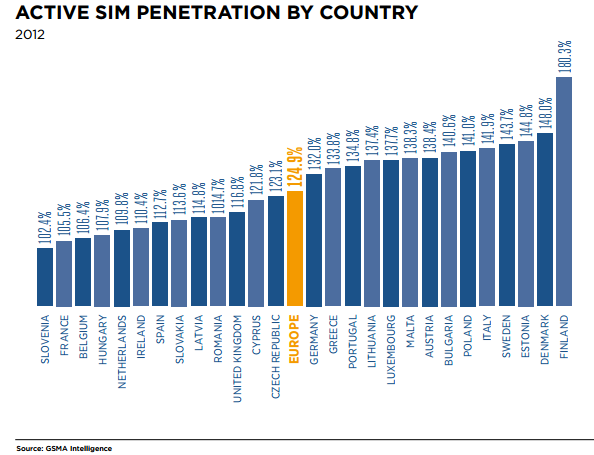 By Sarah Morgan
By Sarah Morgan
A few years ago cloud computing was a popular buzzword, rather than a significant piece of the IT puzzle. However, times have changed and the cloud has become one of fastest growing, most versatile technologies.
Although its presence is growing rapidly, cloud computing is still in the relatively early stage of its adoption. There are still thousands of companies, who are only now considering moving to the cloud.
Image courtesy of digitalart/FreeDigitalPhotos.net
What’s the current state of play?
According to a survey by WANTED Analytics, over 2,400 organisations were seeking IT professionals with cloud computing skills in 2012.
An IDC White Paper, commissioned by Microsoft, also revealed that “cloud-related skills represent virtually all the growth opportunities in IT employment worldwide and demand for cloud-related positions will grow by 26 per cent annually through 2015”.
In EMEA, IDC forecasts that cloud-related IT jobs will grow by 24 percent per year to about 1.4 million by 2015.
What does this mean? This means that now is your time to get your head in the cloud, certify your skills and get a thick slice of technology’s tastiest cake. Here are nine cloud computing certifications that will help you make the most of technology's fastest growing field.
1. CompTIA Cloud Essentials
- Cloud types
- Adoption and implementation of the cloud
- The impact of cloud computing on IT service management
- Cloud computing risks
With this cert under your belt, you demonstrate that you have an understanding of cloud computing from a business, as well as from a technical perspective. As part of this certification, you also learn how to migrate to the cloud and about the governance of cloud computing environments.
2. CompTIA Cloud+
Cloud+ is a newly developed certification by CompTIA, which puts great emphasis on IT security. It’s perfect if you already have some experience in working with cloud technology.
As a Cloud+ certified professional, you will have an understanding of cloud computing terms and methods, and the aspects of IT security. You’ll also be able to maintain and implement cloud infrastructures, including network and virtualisation technologies.
The Cloud+ certification also covers:
- Resource management
- Security
- Systems management
- Business continuity in the cloud
3. Rackspace: CloudU
CloudU by Rackspace is a vendor-neutral certification programme designed and developed for IT professionals and decision makers. CloudU teaches you the fundamentals of cloud computing, with the help of whitepapers, lectures, quizzes, video tutorials, e-books, webinars and live events.
CloudU’s content is available to anyone, however in order to obtain the certification, you must complete 10 CloudU lesson quizzes and a 50 question final exam.
The lessons of CloudU cover everything from cloud types, virtualisation and security to application programming interfaces (APIs) and hypervisors.
4. MCSE: Private Cloud
This certification is the crown jewel of Microsoft’s cloud portfolio. The MCSE: Private Cloud certification proves your skills in managing and implementing Microsoft private cloud computing technologies. Combined with Windows Server and System Center, you’ll be able to build your Microsoft private cloud to provide flexibility for your IT infrastructure. As part of this certification you’ll cover topics such as:
- Deploying cloud services
- Monitoring private cloud services
- Problem management in the cloud
- Private cloud protection and recovery
Prior to getting this certification, you need to already have your MCSA: Windows Server 2012, which includes passing Exams 410-411-412.
5. VMware Certified Associate – Cloud (VCA-Cloud)
VMware’s full portfolio of cloud computing certifications is currently made up of six different cloud-specific certs, from beginner to advanced levels. The first level of this hierarchy is VCA-Cloud, which can be obtained by completing a free, self-paced eLearning course.
To prepare for your VCA-Cloud exam you may take the VMware Cloud Fundamentals course, which will teach you to define and describe the different types of clouds and also provide an overview of VMware vCloud Suite.
6. HP ATA – Cloud
HP’s Accredited Technical Associate – Cloud certificationteaches you industry-standard virtualisation technologies, including the planning and designing of common virtualised services and their implications for customer needs.
As part of this certification, you learn how to design, implement, and support end-to-end IT systems. Furthermore, you also learn about the following: - Installing, configuring, and upgrading servers, storage, data networks and applications in business environments
- Differences between hosted, co-located and cloud networks, and a traditional on-premises network
- Business implications and selection criteria of appropriate responses to a given business scenario
7. CloudSchool.com – Certified Cloud Professional (CCP)
Certified Cloud Professional (CCP) by CloudSchool.com is a vendor-neutral cloud certification, focusing on fundamental topics of cloud computing. With this certification under your belt, you’ll be familiar with cloud computing terminology and concepts, as well as the benefits, challenges and risks of using the cloud.
You’ll also learn about SaaS, Paas and Iaas models and the different types of clouds. To get your CCP certification, you must pass two exams:
- C90-01 Fundamental Cloud Computing – standard prerequisite of CloudSchool.com certs
- One additional exam from this list
CloudSchool.com offers self-study resources, study sessions as well as instructor-led workshops to help your prepare for the exams.
8. Cloud Security Alliance: The Certificate of Cloud Security Knowledge (CCSK)
- Architecture
- Compliance
- Governance
- Virtualisation
- Operations
- Encryption
According to Gavin Hill, Venafi’s Director of Product Marketing: "With data being the new currency, the control of trust in the cloud is ever more significant. The CSA updated Certificate of Cloud Security Knowledge (CCSK) brings practical guidance to security professionals deploying workloads in the cloud. It delivers the necessary controls that enable security professionals to deploy cloud applications with security and trust mind."
9. (+1) IBM Certified Cloud Solution Architect v1 and v3
Last but not least, let’s take a look at both versions of IBM’s Certified Cloud Solution Architect. v1 and v3 certify your skills to design, plan and manage IBM's cloud computing infrastructure. As an IBM Certified Cloud Solution Architect you are also able to provide a detailed overview of the benefits and underlying concepts of cloud computing.
To obtain these certs, you should have a working knowledge of cloud fundamentals as well as a basic knowledge of IBM cloud computing essentials.
There you have it nine (+1) cloud computing certs that will definitely get you ahead of the curve and help you make the most of what the cloud has to offer. And if you are interested in even more cloud certs, check out our full cloud portfolio.
About the Author:
Sarah writes for Firebrand Training on a number of IT related topics. This includes exams, training, certification trends, project management, certification, careers advice and the industry itself. Sarah has 11 years of experience in the IT industry.
.png)

.jpg)
.jpg)



.png)






.jpg)



.jpg)


.png)



.png)




